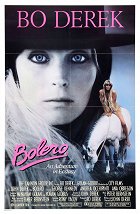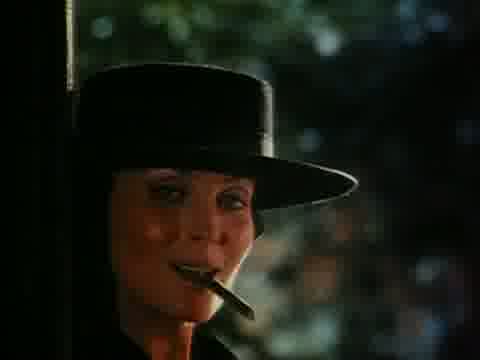Ohjaus:
John DerekKäsikirjoitus:
John DerekKuvaus:
John DerekSävellys:
Peter BernsteinNäyttelijät:
Bo Derek, George Kennedy, Andrea Occhipinti, Olivia d'Abo, Ana Obregón, Mickey Knox, Mirta MillerSuoratoistopalvelut (1)
Juonikuvaukset(1)
Sensuous adventure tale which follows the exploits of a young woman who, after graduating from High School, sets out with her trusted chauffeur on a voyage to Arabia to find the man of her dreams. (jakelijan virallinen teksti)
Arvostelut (1)
Former Hollywood hunk John Derek gained fame through his marriages to beautiful actresses, whom he directed in joint projects, and as an avid photographer, shooting nude photos of them for men’s luxury magazines. Today, his filmography is best known for the last period of his creative career, after his marriage to the enchanting Bo Derek, who proved to be John’s ideal partner not only on a personal level (his marriage to her lasted the longest), but also in terms of professional collaboration. After various ambitious dramatic films with his previous wives, he and Bo moved on to the production of stylised erotic films, which, together with his photography, made Bo a sex symbol of the decade (more precisely, they lived off and cemented that status, starting with her appearance in 10). Though the films that they made together were unreservedly panned by critics and regularly received Golden Raspberry nominations, they were mostly commercial hits, particularly Tarzan, the Ape Man, which became the fifteenth highest-grossing film of 1981. All of their joint projects can be described as film variations on Derek’s photo layouts for Playboy – superficially attractive, titillatingly erotic and candidly naïve. Thanks to its generous production resources, Bolero was their most ambitious project. Whereas the Dereks had financed their other films themselves, this time they got creative freedom and sufficient financial backing from Menahem Golan and Yoram Globus, the heads of Cannon Films, whose portfolio was in several respects well suited by the Dereks’ project – in addition to occasionally producing would-be intelligent erotic films like Lady Chatterley’s Lover and Nana, they also strived to elevate their company’s reputation by financing projects by distinctive filmmakers, with greats such as Altman, Cassavetes, Godard and Konchalovsky at the fore. It is also necessary to mention that Golan evidently had ambitions to have all of the leading major stars of the day and of past decades in the Cannon portfolio, and the Dereks’ projects precisely fulfilled that aim. Like the Dereks’ other films, Bolero became a target of ridicule on the part of critics and disparagement from movie fans. But this is only an indication of misunderstanding, or rather an unwillingness to get on board with the game being played. John Derek’s films with Bo cannot be seen as classics with dramatic arcs, character development and conflicts. Nor are they part of any of the traditional genres. They are admittedly naïve and intentionally formalistic odes to Bo’s natural charm, her body and sensuality, and of no less importance, poetic celebrations of the Dereks’ lifestyle. We can view Bolero as a light-hearted, refreshingly emancipatory and slightly meta creative variation on the erotic stories from the red library. Bo plays a rich young heiress who wants to lose her virginity, but her naïve ideals, nourished by images of masculinity from the early 20th century, end in a mostly unexpected, ridiculous clash with reality when icons of romance novels, such the sheik and the bullfighter, fail to fulfil the heroine’s expectations. Her journey around the world through various beds seems almost like an equivalent of James Bond, except that instead of his serious missions to save the world, in her case it is all about debauched egocentric pleasures. Thus, behind a veil of sincere naïveté and playful casualness, a poem of sensuality in praise of carnality, sexuality and Bo Derek opens up for viewers who are willing to yield to the film’s dubious rationality.
()
(vähemmän)
(lisää)

